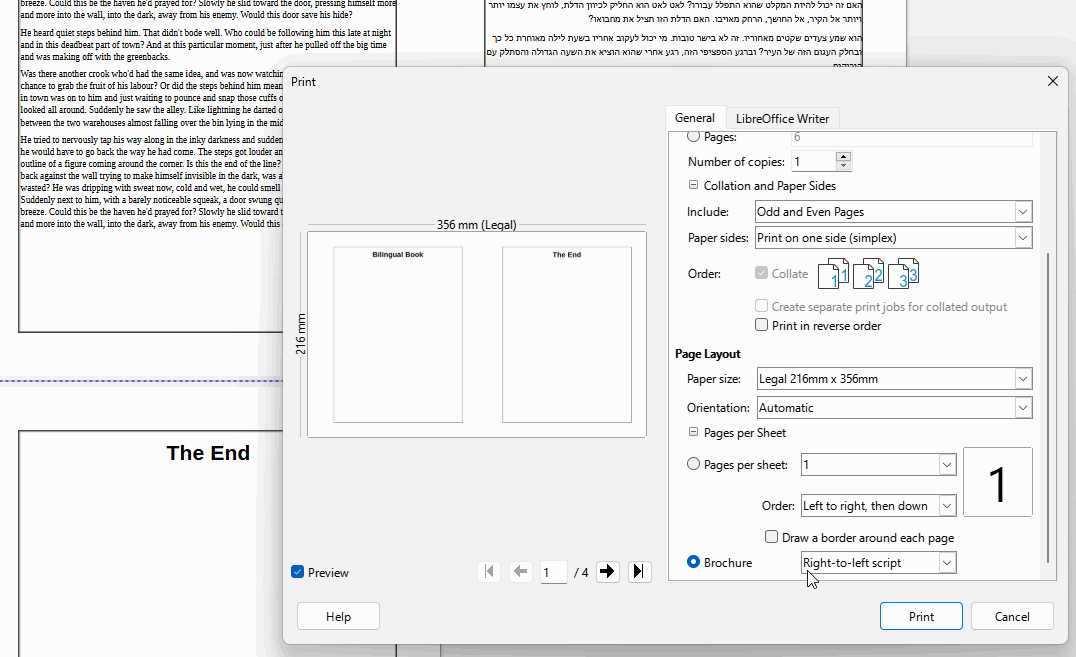I’m a new user. I want to create a small book with Hebrew text on one page, with English facing. I was thinking to use legal-size paper in landscape, and create two text frames, which would appear as separate pages when the sheet of paper is folded in half. Maybe someone can suggest a better way?
I had started such a document, but when I realized I had left something out, I could not figure out how to insert a new page in the middle, between two existing pages. Clicking “insert page” resulted in a new page at the end of the document, not where my cursor had been. Can you tell me how to insert a new page between two pages with text in frames?
You could just write your document in Book view with one page in English and the next in Hebrew and just use page breaks to separate the two languages. Book view should enable you to keep one language on left pages and the other language on right pages. To insert an extra page you would always have to insert two pages but that should become obvious on insertion of first page.
.
Consider if you want mirrored layout or Right and Left pages which would allow different footers.
.
Set the pages as Letter in portrait orientation. In File > Printer settings set your legal size paper there. When you come to print, make sure you set to print as Brochure on your Legal paper.
Choose left to right or right to left for the layout of the book.
Sample document with translation by Google Translate. I added thick page borders only to show them in the screenshot, I am not suggesting that you should use them.
BilingualBook.odt (16.2 KB)
Writer is text-flow oriented, not page-oriented. Consequently, any layout based on page can only be achieved with workarounds.
Different languages rarely have the same “expansion ratio” (text size for same semantic contents). This implies a synchronisation problems when both versions are supposed to be corresponding (to avoid identical sequences to be on different pages).
@EarnestAl suggests a fully manual process where you force page breaks. This process is rather constraining because you must handle page contents yourself. Notably, you limit manually text volume in one page and don’t benefit of automatic flow management (text no longer flows automatically from one page to the corresponding next).
Another strategy is to insert a 2-column table in the document. This can be done in portrait orientation but columns become rather narrow, or in landscape orientation for more traditional text aspect in each column.
The “synchronisation” issue is handled by splitting your text into rows containing “basic units of significance”, usually one paragraph. thus the translations remain close to each other.
The table and its cells must be allowed to split across page breaks (or you may choose no to split cells only so that their topic is never split by a page break to make comparison easier).
Try to avoid too large text in cells, notably avoid cells spanning several pages because Writer will load in memory full row contents before laying out text. This page-spanning issue has a big impact on performance and responsiveness.
When you realise something has been omitted:
- a part of a paragraph: add it in the relevant cell; row height automatically adjust and Writer reflows text if needed
- a paragraph between two existing ones: insert new row in the table; Writer takes care of the rest

